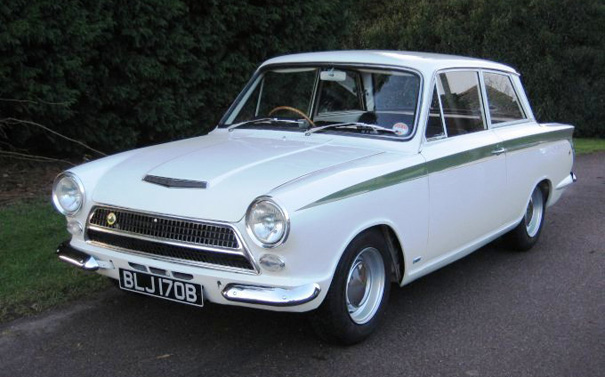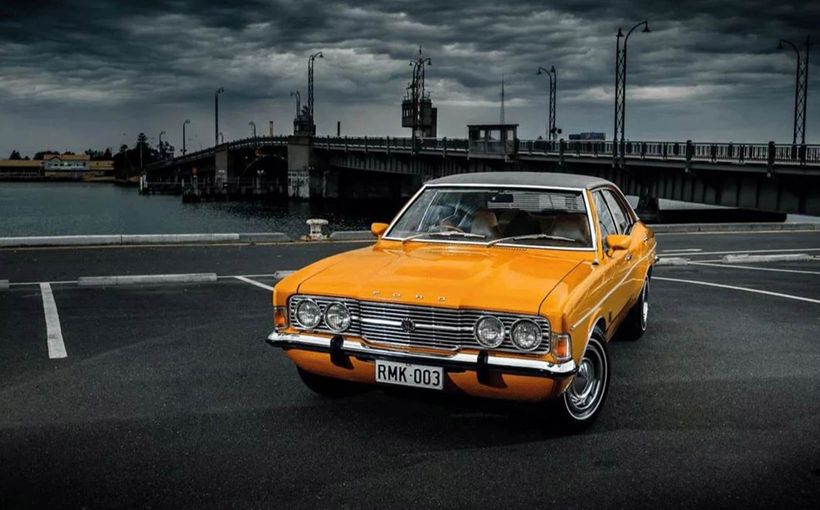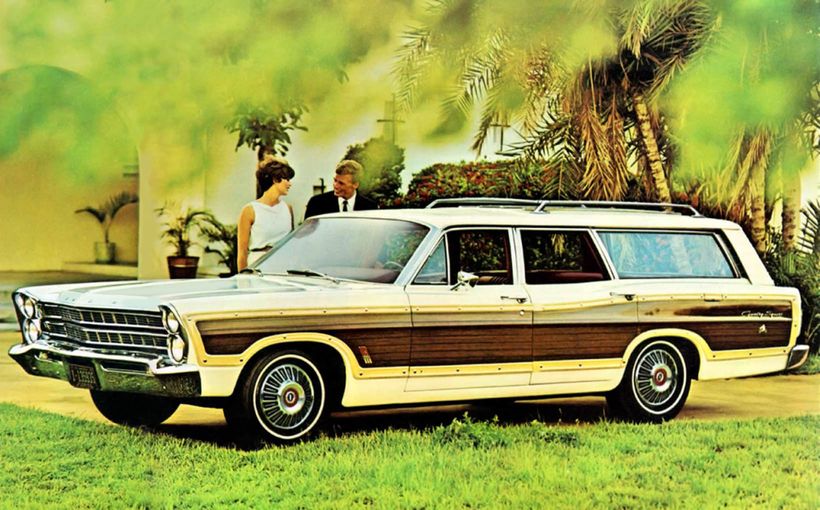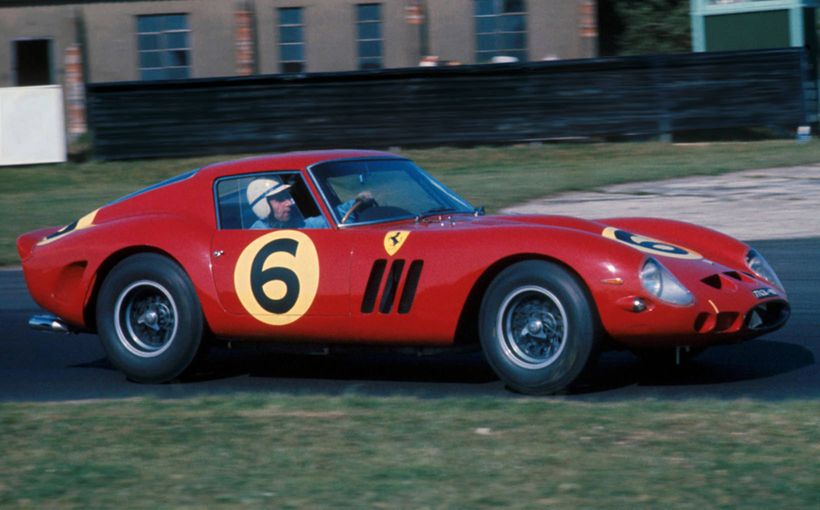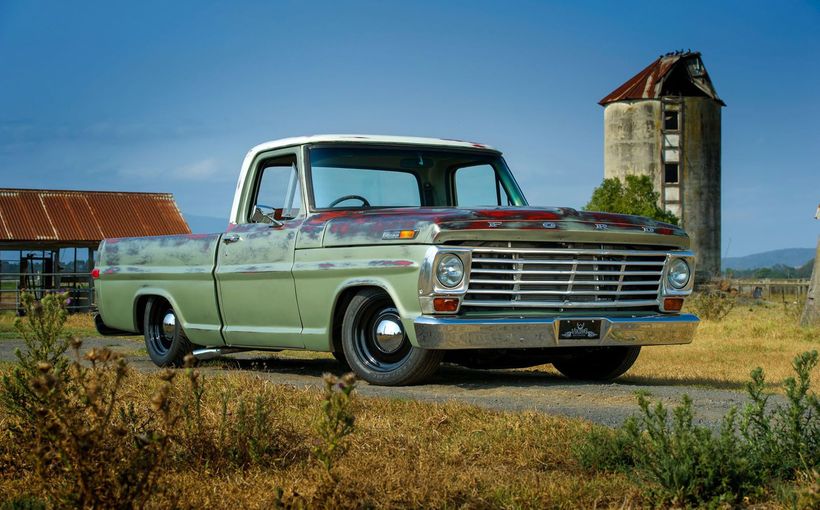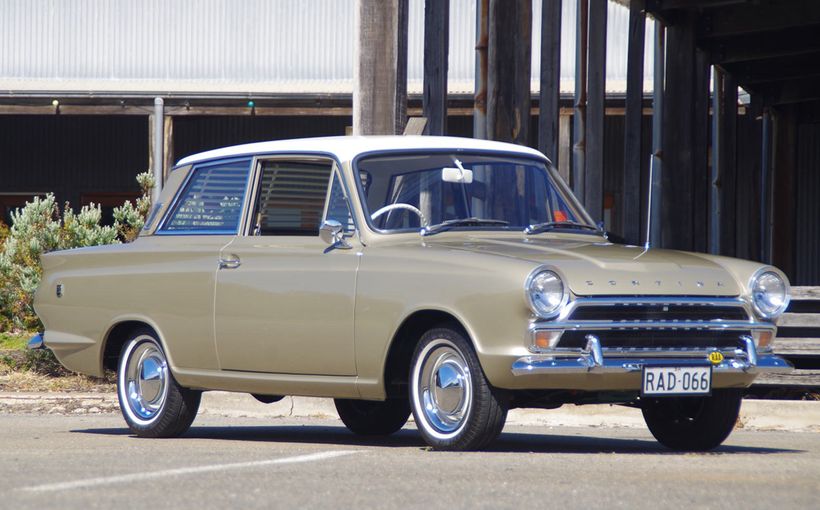Lotus-Cortina Mk I: The Extraordinary Came at a Cost

Lotus-Cortina Mk I: The Extraordinary Came at a Cost
The Lotus-Cortina was vital in validating yet another conservative British Ford against adventurous new rivals, a role especially important in Australia. From an era before designer labels were spread around like rubber stamps on generic products, the Lotus-Cortina was a genuine Lotus based on Ford’s ground-breaking Cortina unitary design of 1962.
Designated Type 28, it was bookended by the Type 27 Formula Junior open wheeler and Type 29, the first Lotus Indianapolis racer. Lotus was in the fast lane and fast outgrowing its cottage industry status.
Two critical developments opened the door for the Lotus-Cortina. A new Ford-based twin-cam engine for the Type 26 Lotus Elan was an opportunity waiting to be exploited.
After Ford’s Dagenham division cheekily rejected the US-developed front drive Cardinal, Ford and Lotus weight-loss priorities were suddenly compatible. To match the Cardinal’s weight, packaging and cost targets in a rear drive equivalent, Ford applied state-of-the-art aerospace stress-analysis to the Cortina.
Ford Cortina Mk I
The advances of the Cortina Mk I were not fully understood in Australia on release but the GT and the Lotus Cortina soon changed that.

Two Ford UK personnel in particular and their contributions were even more relevant to the Lotus-Cortina.
Dennis Roberts was Ford’s secret weapon. Australian Don Ward, after rising to Chief Body Engineer at Ford UK, had set up a pioneering structures laboratory in the late 1950s anticipating the trend towards lightweight unitary body shells.
Roberts in the meantime had left Ford for the aerospace industry then returned as an expert in the latest stress-engineering principles and calculations in supersonic aircraft and helicopters. It was a field growing at a frenetic pace after the embarrassing stress failures of the pioneering Comet IV jetliner.
On Roberts’ return to Ford, Ward gave him the job of heading up the new lab. Roberts’ work on a new lightweight shell for the Cortina was the first opportunity to validate Ward’s vision. Another Australian Ford engineer from Geelong had been sent over to work with Roberts to anticipate any durability problems. Ford would ultimately incorporate the Australian improvements in all Cortina shells leading to the Cortina’s global rally successes.
Because there was not a surplus piece of metal anywhere in the Cortina, Colin Chapman’s early modifications to the Lotus Cortina generated their share of problems.
This explains the two distinct versions of the Mk I Lotus Cortina. The earlier version with extra Lotus parts is more sought-after as a collector’s item. The second version with more mainstream Ford parts was no less effective and far more durable.
The Lotus Type 26 Elan Solution
The 105E or Kent engine, Dagenham’s new overhead valve inline four, had become a favourite with tuners and racing teams alike. Under the bonnet of the new reverse-slope rear window Anglia, it was no less admired in Australia. Colin Chapman first saw the potential of adding a twin-cam head to the 1340cc 109E Consul Classic engine then the 116E 1498cc version with its five bearing crankshaft.

The aluminium Lotus twin-cam head was designed to fit the stock Ford block leaving the original camshaft in place to drive the distributor, fuel and oil pumps. Designed to neatly slot under the 1.5-litre European FIA class for the Elan, it was changed at the last minute after the FIA lifted the limit to 1.6-litres.
Although the head design was originally defined by ex-Coventry Climax man Harry Mundy, Lotus commissioned Cosworth to rework it for Ford blocks which had their bores increased to deliver 1558cc. The first Elan deliveries were then recalled to have their 1.5-litre engines swapped at no cost. The engine was assembled by J.A. Preswitch (JAP) who combined the new heads with specially selected Ford blocks that would tolerate the increase in bore.
Apart from this twin-cam engine and its special close-ratio Ford gearbox, the Elan also featured a race-bred independent rear suspension that exploited pioneering coil over shock struts and wide A-arms with double-jointed driveshafts.
Chapman had originally offered the Elan to Ford as a steel body sports car for the Ford network. Although Ford wasn’t interested in the niche sports car business, the proposal had opened the door.
In a classic case of Chapman getting what he needed, not what he wanted, Lotus was not only given a joint venture model but was left with a new factory to build it in. An onsite Ford staffer was assigned to Lotus to fast track the production processes, invaluable for Chapman’s wider transition to a volume manufacturer.

The Elan and the new Lotus-Cortina assembly and development facility would remain Lotus property. The lift in manufacturing expertise and economies of scale would later allow Lotus to function at another level as an independent road and race car manufacturer.
Under Ford’s global Total Performance mantra, Dagenham had to quickly find a winner more applicable to its own market requirements than the Falcons and Galaxies competing in Europe. There was also a valid concern that the Cortina was looking old school against the innovation of the Mini, Volkswagen and Renault.
After Ford and Lotus combined the Elan’s performance parts with a special Cortina shell with aluminium panels, a premium-level Cortina could be positioned as a cut-price Alfa Romeo alternative for the European market. It was then a relatively short but not always simple step to develop it into a dominating force in saloon car racing.
Lotus was then given the job of building the cars so Ford could concentrate on its core business which would soon involve meeting exploding global Cortina demand!
The Lotus Formula I and Indianapolis association then added all the credibility Ford would need for its base Cortina. Everyday Cortina owners could then quietly bask in the glow knowing there was nothing under their bonnets to confound local workshops or DIY repairers, still a big consideration in 1962.
The Lotus-Cortina was a win-win for all parties before it even turned a wheel!

Because the Cortina faced new Japanese entries as well as its British and European rivals in Australia, the Cortina was in even greater danger of being dismissed as a stretched Anglia or worse, a British version of the frail first US Falcon. Although the Lotus-Cortina could never be sold in Australia at a competitive price under strict local import restrictions, it had an important role to play in the hands of privateers.
As soon as the same drivetrain could be combined with local Escort production, it was sold locally. However, specialist Lotus input in parts and assembly made that process impossible for the Mk I Cortina. This forced Ford Australia to develop its own Cortina GT program that ultimately drew on several Lotus-Cortina developments while the Lotus-Cortina and Lotus Elan weaved their magic in the hands of privateers.
The First Lotus-Cortina Mk I
After handing the whole Lotus-Cortina project to Lotus, Ford could distance itself if it fell over. Because Ford was only supplying unfinished two-door Cortina shells, it was not exposed to anywhere near the same problem areas if it had undertaken the Elan sports car project. After the Elan continued as a Lotus, Ford’s rejection of the Elan project added more exotic credentials to the Cortina than if Ford had produced the Elan.
Although the Chapman association was the source of everything brilliant about the Lotus-Cortina, it was also fraught with the usual Chapman frailties. As expected, he approached the Cortina as an overweight production car that needed to be lightened. Except the Cortina was already the product of a far more expert and complete weight loss program than anything undertaken by Lotus.
The Cortina rear section was carefully designed so that the stresses fed into the body by the rear axle were carefully spread over the front and rear leaf spring hangers and centre shock mount. Chapman’s attempts to replace the stock live axle with a complete Elan independent rear end were blocked by Ford keen to protect the credibility of the production Cortina. Chapman then replicated his Lotus Seven clubman rear end under the rear of the Cortina with initially disastrous results.

Because the Seven had no structure behind the rear axle, the Cortina’s leaf springs were replaced by coil over shock units that fed rear axle loads into the shock mounts next to the rear wheel arches. Trailing arms were bolted up to the front spring hangers and a big A-frame was mounted under the diff and attached to the body under the rear seat. To bring the unsprung weight back to what it was, the diff housing was made from aluminium.
The results were predictable. The saloon body’s higher centre of gravity added stresses not seen in the low slung Lotus Seven. Rear panels distorted as the coil springs punched rear axle loads into the body and the A-frame stresses on the diff generated ongoing oil leaks and diff and axle failures.
Although other driveline parts were made of aluminium and the doors, bonnet and boot were skinned in aluminium, the Lotus modifications actually increased Cortina weight.
The main culprits included extra bracing that extended in both directions: rearwards in the boot and forwards into the rear passenger compartment behind the side trim so that it could spread the rear axle loads over the length of the deleted leaf springs. The extra bits that came with the twin-cam head, twin Webers and brake booster added their share. The clutch and tail shaft were both lifted in diameter.
Steel wheels widened to a chubby five and a half inches with inset hubcaps may have defined a new street fashion but added weight compared to racing alloys which were not yet trustworthy on a road car in 1962.
Brakes were the GT’s front discs and the larger Classic’s rear drums. Both had harder compounds that required the booster, located in early cars at the back of the engine bay. A big drop in ride height was matched by new forged steel lower control arms at the front to reduce negative camber and lighten steering loads. A bulge was let into the boot floor to allow clearance for the diff at the lower road height.

The battery was moved to the boot RHS rear corner, cutting capacity further after the rear bracing prompted the spare wheel to be shifted flat across the boot floor.
The stock Cortina’s basic strip gauges and plastic steering wheel were swapped for a proper Lotus instrument pack similar to the Elan’s and alloy-spoke wood rim wheel, also shared with the Elan. The stock dash trim and body colour cabin finish stayed.
The flat Cortina seats were upgraded to plump buckets with side contours on the same frames, divided by a centre armrest/storage bin and centre console which housed the remote gear shift. This dictated the bench seat Cortina’s umbrella handbrake. All added weight but were useful for racing and critical to the upper level presentation necessary for vital homologation road car sales.
Lotus discipline was restored by the rubber floor mats and the token front bumperettes plundered from the Anglia delivery van. All were based on a white two-door Cortina 1200 shell with its Consul bonnet badge, opening quarter vents and rear side glass.
Painted by Ford, it was then adorned by the Team Lotus green flash with its outline dependent on who was doing the painting, and blacked-out grille mesh, a livery determined by Colin Chapman himself. It arguably established the appearance agenda for every special version of a production sedan from that point.

Although several lower weight figures were claimed, the most consistent unladen kerb weight quoted was 16.2cwt/810kg compared to the base Cortina 1200’s 15.5cwt/750kg, both remarkably light given their original five seater family car focus.
The Lotus input in these early cars was extensive and expensive leading to a British price of 1100 pounds or about $2700 compared to the $1900 local price of the base Cortina. As a full import, the Australian landed price was estimated to be at least $4000 with the extra duty. For British buyers, it was still a bargain as twin-cam European rivals were at least another 200-300 pounds.
As factory development of the Cortina GT continued in leaps and bounds, hand-fettling by Lotus was reduced enough at the close of 1964 for a price cut back to 990 pounds. By June 1964, the alloy panels had gone, the special Elan gearbox was replaced by the GT item, there was a steel diff housing and Ford’s new two-piece driveshaft absorbed some of the shock which was adding to the diff failures.
During 1964, a Special Equipment version was offered. It also featured the new GT gearbox which made it more tractable on the road. Just 64 examples featured the upgraded engine (105bhp/78kw to 115bhp/86kW) with new camshaft profiles, reworked head with bigger valves and a big bore exhaust system. The stock Lotus blue cam covers were changed to green. The SE also featured Armstrong adjustable rear dampers with different rear coils. The Lotus woodrim steering wheel was leather-covered on later examples and there was a Special Equipment badge at the rear.
This SE upgrade shadowed a similar package for the Elan and defines the most desirable of all early Lotus-Cortinas.
The process to make other Lotus-Cortinas more mainstream and reliable was underway.

The Second Lotus-Cortina Mk I
In October 1964, a Lotus-Cortina was revealed with the wide grille facelift, new instrument panel with round instruments and the latest Aeroflow face-level ventilation with its exit vents on the C-pillars.
After the bonnet Consul badge was switched to Cortina, it was arguably the first Lotus-Cortina as technically the earlier cars were Lotus-Consul Cortinas! Ford had previously launched and promoted the Cortina as part of the Consul family to highlight its family car focus. Thanks largely to the Lotus connection, the Cortina now had its own identity.
Cortina GT seats replaced the bespoke Lotus items. Because the new instrument panel was designed to be easily upgraded with extra gauges for the Cortina GT, the Lotus instruments no longer required a special dash. However, the instruments did feature a special satin silver surround and the dash was painted black. To match this, the steering wheel centre badge was changed from yellow and green to black and silver.
The centre console and centre armrest/bin plus the umbrella handbrake continued, all missing from the GT cabin. Front quarter vents and rear side glass were now fixed thanks to the Aeroflow system unless optioned otherwise. Under the bonnet, little had changed except the brake booster was moved to the front of the engine bay for left hand drive.

Later in 1965, a centre badge celebrating Lotus achievements at Indianapolis was added to the centre console.
From July 1965, the Cortina GT rear axle was fitted after Ford added radius rods to its leaf spring rear end. As soon as race teams found the change made no difference to lap times, the rear bracing could be deleted which freed up the boot after the spare was returned to its LHS rear corner well.
Late in 1965, the new gearbox from the Corsair V4 was fitted and regarded as the best for road use. Its indirect ratios were closer to the original Elan gearbox but with a better spread.
Freed from fluttering and easily damaged aluminium panels, an excessively tall first gear that chewed up clutches in traffic, a body shell that highlighted resonances and a rear suspension design that kept eating its way through diffs and threatened the rear body structure over anything other than smooth roads, the Lotus-Cortina was ready to be enjoyed as a road car.
At this point, the Lotus-Cortina was exported to the US timed perfectly to cash in on recent Lotus Indianapolis victories.

After the Lotus-Cortina Mk I (and the Elan by association) had achieved its brief of adding glitter to the Cortina badge, it was time for all parties to move on. Lotus had grown to such an extent that it now had to relocate its production facilities at Hethel to meet demand for its own ever-expanding road car range.
The durability and quality gap that existed between Ford’s own Cortina GT and the Lotus-Cortina and the warranty claims that came with this were no longer acceptable. The model was dropped from late 1966 until March 1967.
The next Lotus-Cortina, based on the Mark II, was a very different car built by Ford. Yet its soul was still by Lotus after engine manufacture was switched from JAP to the new Lotus facility then delivered straight to Ford.
Lotus had enough on its plate as a manufacturer after the Elan range was expanded to include a new four seater coupe. The new mid-engine Europa would soon feature a twin-cam engine option. It made sense for Lotus to look after these unprecedented engine volumes and leave the final assembly of the Lotus-Cortina to Ford.
And once the Lotus-Cortina Mark II had run its course, Ford could then transfer the Lotus drivetrain to the new Escort as soon as it was the Escort’s turn to have its name in lights.
Reference: Ford Cortina, The Complete History by Russell Hayes

Something Closer to Home
If you grew up in Melbourne, near the outer eastern suburbs at the foot of the Dandenongs in the 1960s, there were two hot spots for the Lotus Cortina, even if it was never sold locally.
One was the Coffey manor, which, by nature if not name, was the family seat for the chain of Melbourne Ford dealers that traded under Alan Coffey. Hidden in what is now the prestigious Croydon Hills area, it almost allowed a view of the other but less salubrious hot spot directly across the valley in Kilsyth.
Locals would be treated to a passing parade of US Ford models straight out of the pages of the Saturday Evening Post as Mr Coffey the elder cruised home in his latest Thunderbird or similar. If he caught you gawking, he would just as likely stop and tell you not to make the neighbourhood look untidy.
Mr Coffey the younger went to the UK for work experience at Ford and came home with one of the first Lotus-Cortinas in July 1963. It was this car HUN-999 that famously appeared on the cover of Wheels, November 1963. It was striking in its race-bred simplicity and could be counted on cruising down the same roads as the Thunderbird on occasions. Except the roads were not very good.
Barely seven kilometres across the way, there was a windscreen and general automotive repair business that could have had Royal Australian Mint, Kilsyth office painted on it. It was Jim McKeown’s workshop, strategically placed to meet the never ending demand for replacement windscreens generated by the gravel tourist roads that laced the Dandenongs in the days before laminated windscreens.
Jim was in need of a race car and Peter Coffey had come to the realisation that driving a cherished aluminium-panelled, coil-sprung early series Lotus-Cortina on rough local roads was neither enjoyable nor sensible. The rest is history. For juvenile car-spotters of the district, it created a new Saturday pushbike challenge: spot Jim McKeown’s race car under development in Kilsyth then race back to catch the Coffeys’ latest exotic Ford acquisition on its way home.

